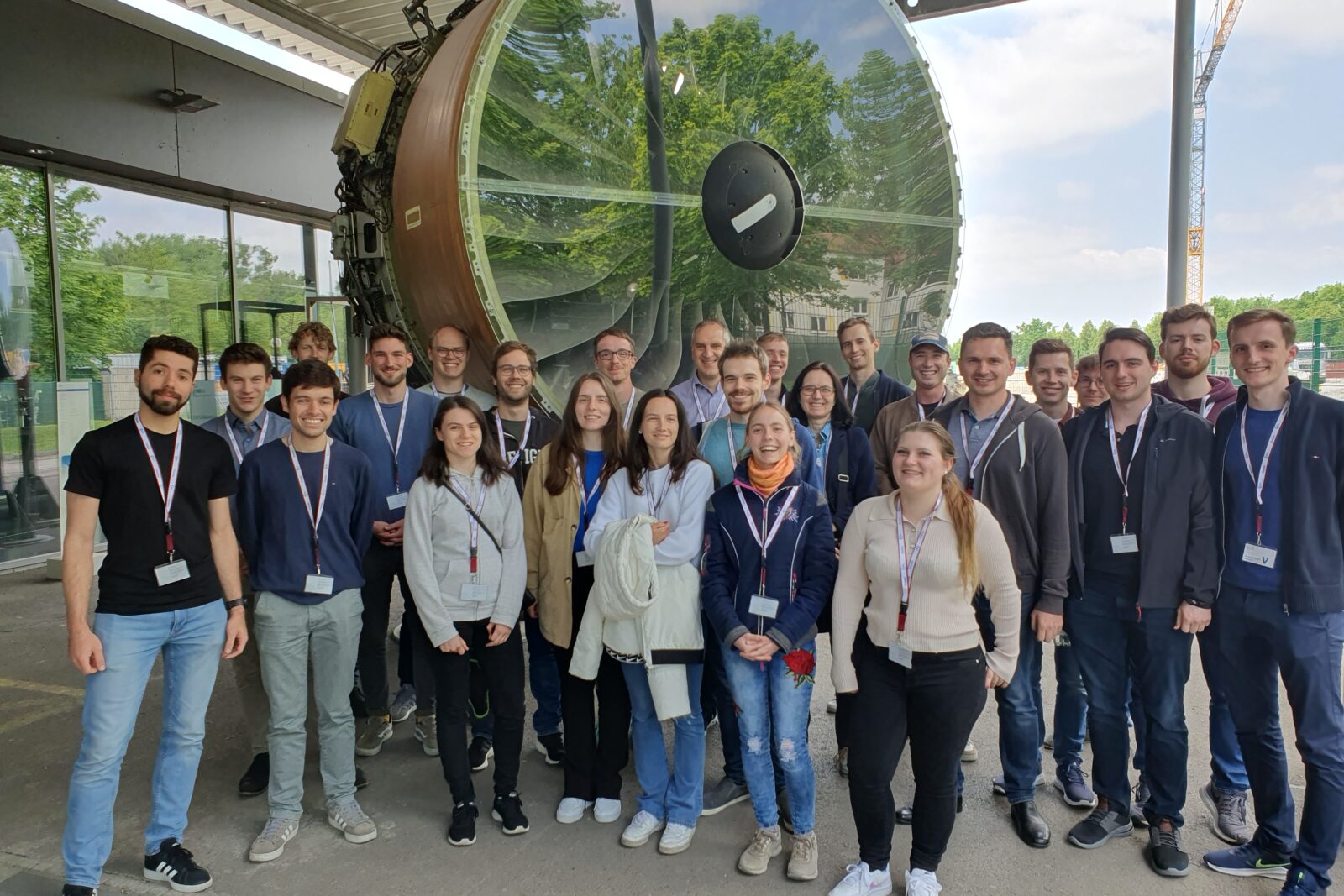The excursion began at SGL Carbon in Meitingen near Augsburg. After a brief introduction to the diverse product world of this company, the students were shown the pilot plant for the production of carbon fibres. In addition, machines and equipment for complex manufacturing processes of composite components were explained in more detail and their application in various industries, from aerospace to automotive. The second stop was a visit to MTU Aero Engines in Munich. After a company presentation and a guided tour through the factory museum, where numerous historic engines are exhibited, the participants were shown the production of various engine components in numerous production halls. The day ended with a presentation on the next generation geared turbofan, which is expected to achieve a further significant reduction in CO2 emissions as well as non-CO2 emissions.
On the second day, a visit to Airbus Technology and Engineering in Ottobrunn/Taufkirchen was on the agenda. Here, the X-Technology Division is located with the E-Aircraft Systems (EAS) test facility, which is used for the pre-development of electric propulsors for future products of all Airbus Divisions, from applications in the field of urban air mobility to commercial aircraft. The informative tour of the EAS facility provided exciting insights into current developments in propulsion technology based on hydrogen, fuel cells, power electronics and high-temperature superconductivity. The challenges that still have to be solved before these systems can be used commercially were also discussed. The last stop of the excursion took the students to the company iABG, which specialises in the investigation and testing of components and systems for the aerospace, defence and automotive industries. After a short introduction of the company and an interesting lecture on the lifetime evaluation of laminates, the tour of the space test facilities began. In the clean rooms provided for this purpose, satellites and other spacecraft are tested using non-destructive testing methods. Not only the facilities, but also a research satellite soon to be launched into space could be directly seen on site.
During the excursion, the TU Vienna students not only gained exciting insights into real-life applications of their course content, especially with regard to lightweight construction/composites and aircraft systems, but were also given an understanding of the importance of interdisciplinary cooperation. From the production of basic materials and the development of innovative technologies, to the manufacture and assembly of components, to quality assurance and testing on test stands, they were able to gain valuable impressions and insights and expand their knowledge.
The courses and in-depth blocks that provide an understanding of the associated theoretical principles are listed on the corresponding websites of the institutes E307 and E317.
E307-02-2: https://www.tuwien.at/mwbw/ikp/mel/lfs
E317-01: https://www.tuwien.at/mwbw/ilsb/lehre/
For further questions please contact:
Univ.Prof. Dr.-Ing. Martin Berens MSc (https://tiss.tuwien.ac.at/adressbuch/adressbuch/person/349600)
Ass.Prof.in Dipl.-Ing. Dr.in techn. Isabella Skrna-Jakl (https://tiss.tuwien.ac.at/adressbuch/adressbuch/person/128956)


